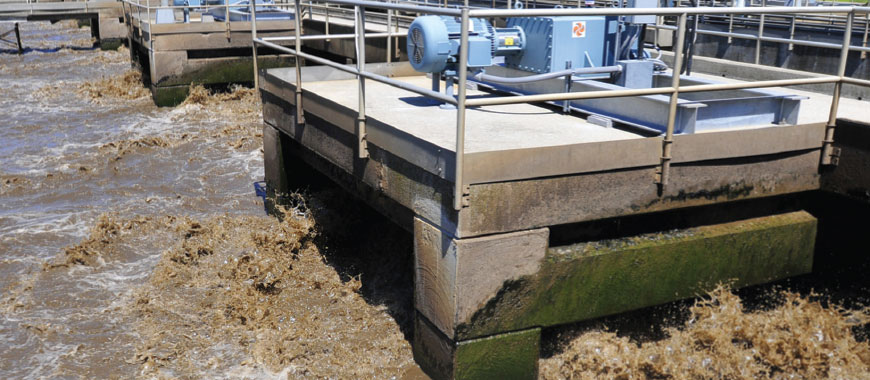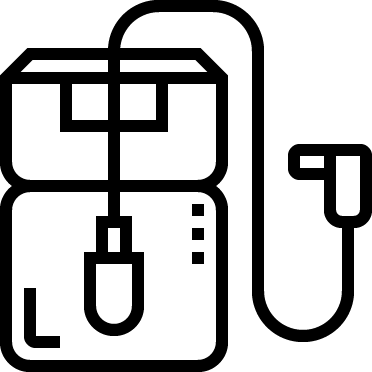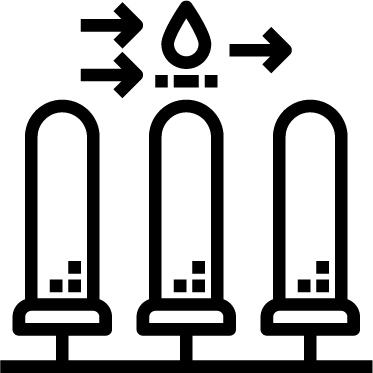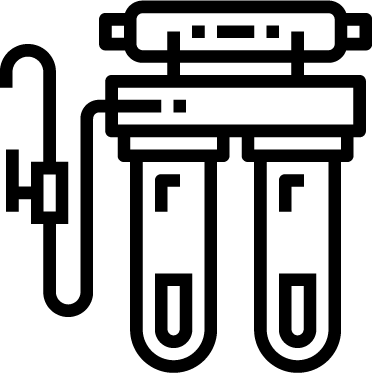
WASTE WATER TREATMENT PLANT IN BANGLADESH
Man-made wastewater is the byproduct of human activities. It can contain a variety of contaminants such as industrial chemicals, pharmaceuticals, and radioactive substances. Wastewater treatment plants (WWTP) are designed to neutralize these contaminants in order to prevent them from entering the water cycle. They help remove unwanted and harmful substances from our water supply and maintain a healthy aquatic environment.
What are the types of wastewater plants systems?
Wastewater treatment plants are designed to treat sewage, process and purify the water. The type of wastewater treatment plant depends on the nature of wastewater. The three main types of wastewater treatment plants:
Primary wastewater plant: Primary wastewater plants are those which convert the wastewater from different sources into a usable form. These plants use the process of biological and chemical treatment to separate the waste materials. The treated water is then reused for other purposes such as irrigation or municipal water supplies.
Secondary wastewater plant: A secondary wastewater plant is used to treat wastewater by removing the dissolved and suspended solids, and then reusing them. Secondary wastewater plants have several advantages over primary treatment systems. They are more efficient in handling the sewage, and the treated effluent can be reused in agriculture or industrial processes.
Tertiary wastewater plant: Tertiary wastewater plant is the wastewater treatment plant that treats the wastewater from the industries, agricultural fields, and municipal drainage systems. A tertiary wastewater plant is also known as a tertiary treatment plant or a tertiary treatment plant. The primary aim of the tertiary wastewater plant is to treat and degrade all harmful pollutants such as chemical compounds, microbiological species, and micro-organisms. This will reduce the levels of these contaminants in the treated water so that they are safe for discharge into waterways or air. The tertiary treatment plant also has the ability to remove odorant materials, colorants, and other nutrients from wastewater using activated sludge processes before final disposal. The tertiary treatment plant should also be capable of removing excess nutrients and sludge from the wastewater before it is discharged into waterways or air. This will help to improve water quality in these areas and reduce the amount of pollution that ends up in rivers, lakes, and oceans.
Advantage of wastewater plant in Bangladesh
The wastewater plants in Bangladesh can be a great source of income. A wastewater plant is a facility that processes wastewater from different sources like industrial, domestic, agricultural, and others. It is a very important tool for developing countries to develop the economy and make it sustainable. The wastewater plant in Bangladesh has many advantages which include;
- It helps us in keeping the environment clean and healthy.
- The treated water can be used for agriculture, drinking, domestic purposes, etc.
- The plant can generate employment for the locals.
- It is a very efficient way of disposing of wastewater and hence saves us from hazardous wastes disposal activities.
- The proceeds from the wastewater plant sale can be used for various development projects in the area around it, helping to create more wealth in that region.
- The plant can also provide extra income for the wastewater treatment operators, engineers, and staff members.
- The plant can improve the socio-economic conditions of the local communities, which in turn helps to reduce poverty and make them better off overall.
- The plant can help to reduce the amount of garbage that is generated in a region, which ultimately reduces the load on landfill sites and helps conserve resources.
There are many companies in Bangladesh that are interested in setting up wastewater treatment plants. These companies can either be existing businesses or new ventures. The main advantage of investing in a wastewater plant is that it is likely to be profitable and there will be minimal risk.
Working process of the wastewater plant
In the wastewater treatment plant, wastewater is treated through several stages to remove various pollutants and harmful materials. The wastewater treatment plant processes wastewater by first filtering the wastewater and then treating it. In the process of treatment, water is separated from solid matter and hazardous chemicals are removed. The water is then either reused or discharged into the environment. The plant often employs a variety of physical, chemical, and biological processes to treat the wastewater. The most common methods used are primary and secondary filtering, disinfection with chlorine or ultraviolet radiation, and dewatering. Primary filtration is the first stage of wastewater treatment and it occurs before chlorine or UV radiation is used. Primary filters use a pad or membrane to trap large particles while allowing smaller objects to pass through. This process can be improved with activated carbon which helps control odors, toxins, and bacteria. Secondary filtering is the second stage of wastewater treatment and it uses sand, gravel, polymer mats, or micro-organisms to remove solids and floatable material. Secondary filters are often improved with bacteria enrichments which help to break down pollutants. Disinfection is the process of cleaning a surface or object so that it is free of disease-causing agents. This can be done through the use of chlorine, UV radiation, or zonation. Dewatering is the process of removing water from wastewater by using pressure and heat. This is usually done after primary and secondary filtering to reduce bulk and improve efficiency.
Features of wastewater plant:
Collection of wastewater: Wastewater is collected from various domestic and commercial places using sophisticated facilities like pipes, channels, tanks, etc. Wastewater is then purified by various treatment methods like Biological rotting process, Chemical oxidation process, Oxidation-reduction reaction, or adsorption plant to remove harmful pollutants before it is released back into the environment.
Treatment of wastewater: The treated wastewaters are discharged through different types of discharge systems like open channels, underground pipes, and ponds.
Flushing of wastewater: Wastewater is flushed through sewers to remove the pollutants that have been absorbed by the soil or groundwater. The effluent discharged from a wastewater treatment plant may be used for irrigation if it meets certain standards set by the government.
Final disposal of wastewater: Wastewater is sometimes disposed of in deep wells or rivers as untreated effluent. It is also burned to create heat, which degrades hazardous pollutants
Maintenance of wastewater treatment plant: Proper maintenance of the wastewater treatment plants helps in better performance and increased lifespan. It includes proper functioning of plant equipment, regular check-ups on chemicals and machinery, etc.
Operation and management of wastewater treatment plant: The operation and management aspect deals with the day-to-day running of a wastewater treatment facility including employing the right manpower, procuring essential supplies, etc.
Inspection and maintenance of wastewater treatment plant: Regular inspection of the wastewater treatment plant is necessary to ensure its proper functioning. This includes checking plant equipment, chemicals, pollutants handling, etc.
Why choose us wastewater plant cleantech engineering
We are the best wastewater plant cleantech engineering company in Bangladesh. We have the best team of wastewater plant cleantech engineering. We have experience of more than 15 years in this field. We have all the latest equipment and technologies to provide the best service to our clients. We have a team of experienced engineers who are committed to providing the best possible service to our clients.
We offer wastewater plant cleantech engineering services that include:
– Design and implementation of wastewater treatment facilities
– Evaluation and renovation of existing wastewater treatment plants
– Development and design of advanced wastewater recycling technology
– Development of advanced wastewater management practices
– Identification and solution of environmental issues in relation to wastewater treatment and disposal.


 Industrial Water Plant
Industrial Water Plant









